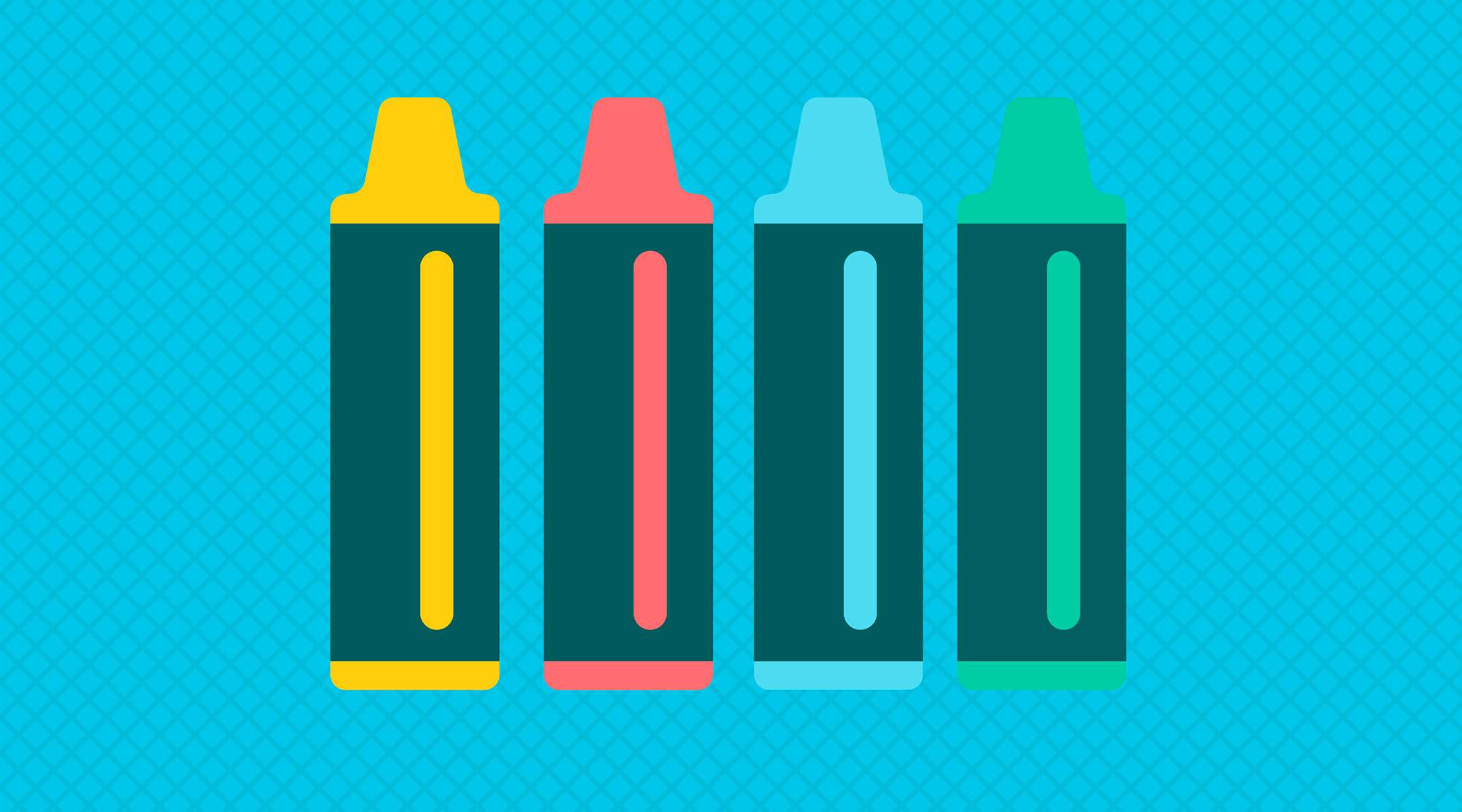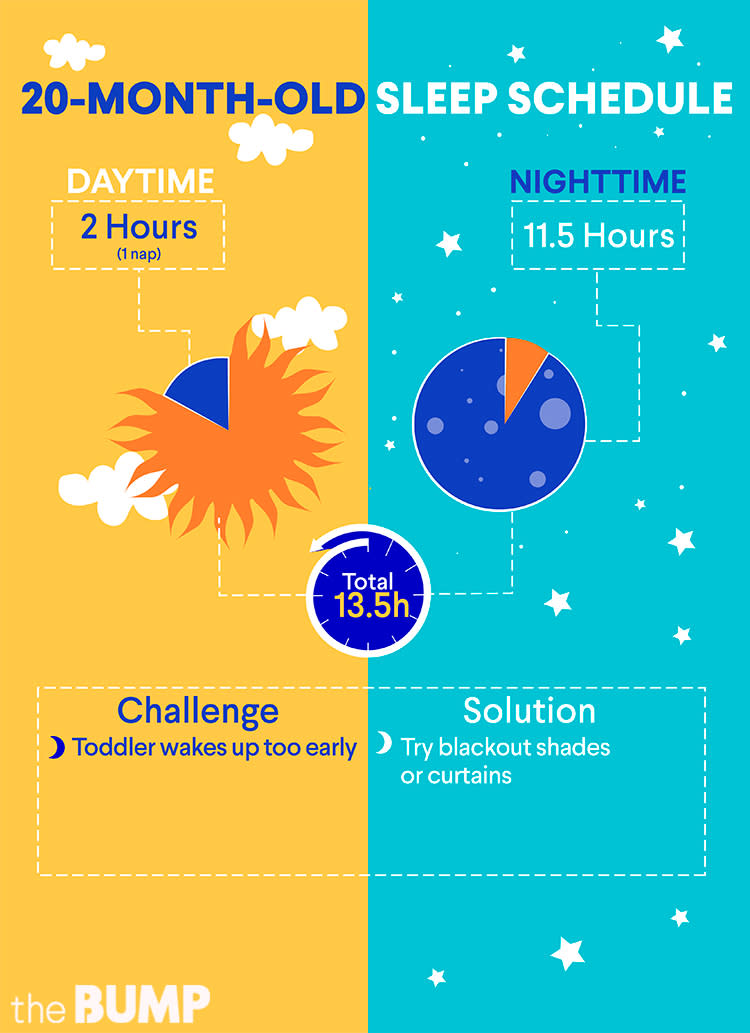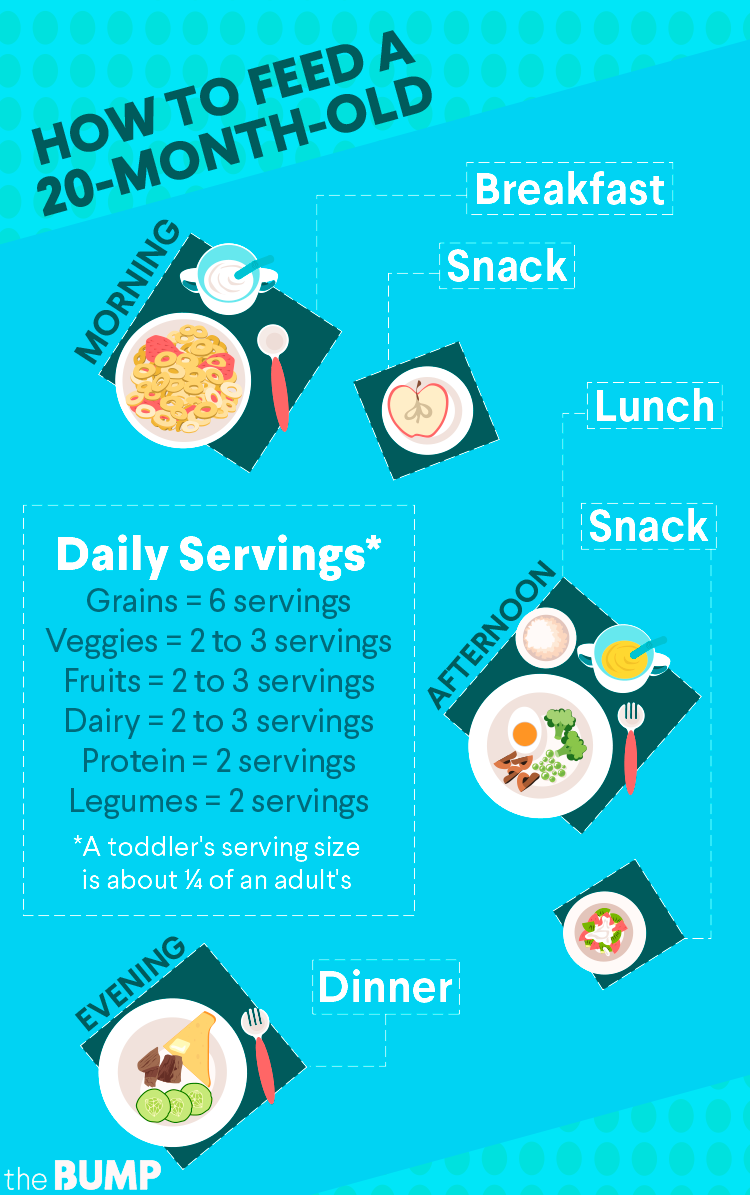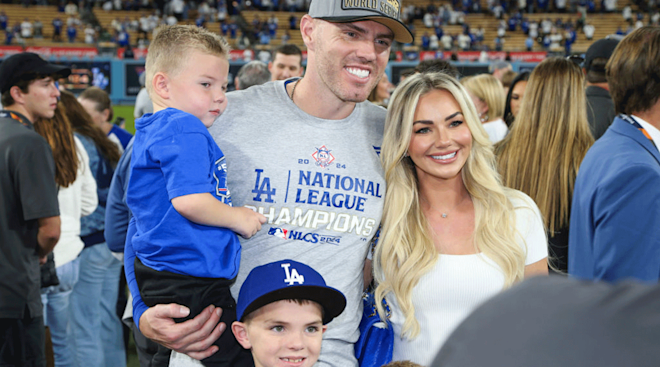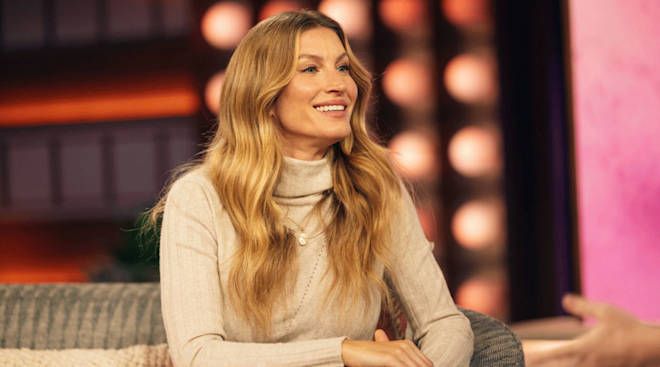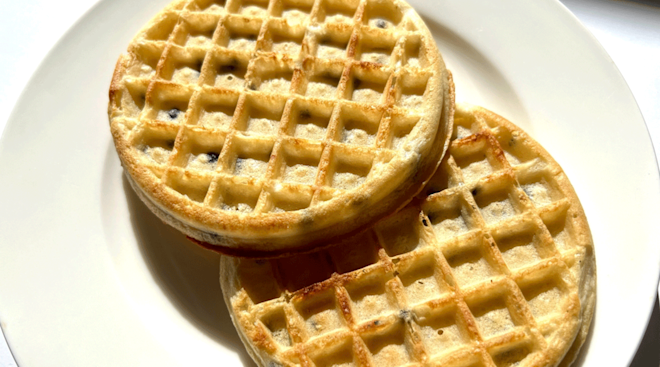Your toddler is 20 months old!
Your little rebel may be resisting feeding, changing, getting in the car seat, washing hands…and just about anything else you want him to do. Toddlers this age like to feel like they’re in control, so offer lots of opportunities for him to “help” or make his own choices. Let him feed himself, for example (even if it’s messy), and if he says he’s done after two bites, so be it. And give him a chance to feel as if he’s making his own decisions. For example, “Do you want to bring your teddy or your truck for the ride?” as you get ready for a car ride, instead of “Will you get in your car seat, please?” or “Get in the car seat now.”
Twenty-month-olds tend to have two sides to their personalities: the fun-loving, energetic side and the side that’s a bit of a challenge.
20-Month-Old Weight & Height
20-month-old weight is, on average, 24.4 pounds for a girl and 25 pounds for a boy, according to the World Health Organization. Wondering how tall your 20-month-old should be? Average height is 32.6 inches for a girl and 33.1 inches for a boy.
20-Month-Old Milestones
What should your 20-month-old be doing? Here are some milestones your 20-month-old may have hit or may be working on:
• Walking. Your toddler’s probably working on learning to walk up steps; next will come walking down them. Some 20-month-olds can stand on one foot while holding on to the wall or a chair.
• Speech. Your child may be saying up to 50 words and will soon start asking “what” and “what’s that” to just about everything.
• Teething. 20 months is about the time a child’s lower second molars pop through, so don’t be surprised if there are a few nights with disrupted sleep.
• Potty Training. A few 20-month-olds show signs of potty training readiness. Now’s a good time to buy a training potty seat and/or start reading potty training books (these are some of our favorites) together, if you haven’t already. But beware of putting pressure on your kid to potty train too soon. Most kids aren’t really ready to start until about 27 to 32 months.
20-Month-Old Behavior
Your now almost-2-year-old is ever-changing, but here’s advice on how to deal with some potentially challenging behaviors:
• Tantrums. Even though your kid’s language is developing by leaps and bounds, she still can’t communicate everything she wants to say, and that can lead to some meltdowns.
• Separation Anxiety. At this age, your kid might become more aware of being away from you and may make a scene—especially if he’s hungry, tired or sick. Though it’s tempting to linger at day care drop-off, it’s best to make goodbyes quick and to stick with a routine. Reassure your child you’ll be back and be specific about when.
• Pushing, hitting or biting. Chalk it up to experimentation, but 20-month-olds tend to have their moments of behaving badly. Avoid overreacting or using physical punishment—“biting” your kid to show them how much it hurts doesn’t stop them from doing it. Stay calm and keep telling your child hurting others is never okay.
20-Month-Old Health
Twenty-month-olds seem to have mild illness after mild illness. Some common health questions parents have at this age include:
• My 20-month-old has diarrhea. What should I do?
• What should I do about constipation in my 20-month-old?
• My 20-month-old has a temperature that’s high. What should I do if a fever develops?
Most parents transition toddlers from crib to bed between the ages of one and a half and three years old. Not quite there yet? First, lower the crib mattress as far as it will go and see if that will keep him secure. Ready to take the plunge? Let your tot help you put his big-boy bed together—it’ll help him feel more ownership.
How Much Sleep Does a 20-Month-Old Need?
Most 20-month-olds need around 11 to 12 hours of nighttime sleep, plus a nap of about 1.5 to 3 hours, for a total of about 13 to 14 hours of sleep per day. Every kid is different, but your child’s schedule may look something like this:
20-Month-Old Sleep Schedule
20-Month-Old Sleep Regression
Regression can happen when a formerly good sleeper suddenly begins waking more, throwing her parents for a loop. A bout of teething or illness could be the cause, or maybe a trip or holiday where her sleep routine changed. To get back to the usual snoozing routine, it’s important to know the root of the problem, so you can find the right solution to help your child get through it. Stick with the usual bedtime routine and set limits that will help your child get back on track.
20-Month-Old Won’t Sleep
Some nights, it seems like bedtime takes way too much convincing. But the truth is, kids need sleep and they will eventually sleep. Promise! Wind things down before bedtime—turn off the TV, music and devices; give her a soothing bath; read calming bedtime stories. And keep the routine consistent: one book, two kisses, one refill of water, then lights out, for example. Don’t let your kid stall or delay.
20-Month-Old Nightmares
When your toddler wakes in the middle of the night, it can be tough to tell whether it’s because of a nightmare or another sleep disturbance. But time could clue you in: Doctors say dreams and nightmares tend to happen in the second half of the night.
If you suspect your 20-month-old has had a nightmare, comfort her and soothe her back to sleep, reassuring her you’ll be close and that everything is okay. During the day, be careful she’s not exposed to any stories or shows that could scare her and cause future nightmares.
20-Month-Old Waking Up Too Early
We’ve been there: You know your child needs more morning zzz’s but he gets up with the sun. Make sure his room is dark and quiet in the mornings. We highly recommend blackout shades or curtains for his windows.
Feel like a short-order cook? It’s okay to let your toddler know “this is what’s for dinner” and not offer other options. He won’t starve by refusing a meal now and then.
How Much Should My 20-Month-Old Eat and Drink?
One- to 2-year-olds should be eating much like you do: Three meals per day, plus two snacks. Give her a variety of foods in all food groups—vegetables, fruits, grains, protein and dairy—daily.
What to Feed My 20-Month-Old
Toddlers tend to get too little calcium, iron and fiber. In addition to dairy products, your child can get calcium from foods such as green leafy veggies, broccoli and tofu. Tofu can provide iron too, as can fortified cereal, dried peaches and lean ground beef. For fiber, you may offer pinto or refried beans, prunes, bananas and whole wheat pasta.
For meal inspiration, check out these food ideas for a 20-month-old:
• 24 Healthy Snacks for Kids
• 22 Tasty, Easy Lunch Ideas
• 15 Creative Meal Ideas for Toddlers
• Toddler-Friendly Cookbooks
20-Month-Old Feeding Schedule
Source: HealthyChildren.org
20-Month-Old Won’t Eat
Now that your child’s growth is slowing down and she’s getting more independent, you might find her refusing to eat more often than she used to. You can’t and really shouldn’t force your child to eat—but you should keep offering a variety of healthy foods and as many unprocessed foods as possible. Here’s more great advice on how to deal with picky eating.
If your child won’t eat anything at all, it could be a sign of illness, and you should call the pediatrician immediately.
A 20-month-old shows independence through simple chores and activities she sees her parents or older siblings do. She loves songs and learning through playtime.
Things to Do With a 20-Month-Old
Fun activities, games and toys for a 20-month-old include:
• Drawing with crayons. Together you can work on practicing drawing a straight line.
• Head, shoulders, knees and toes! Your 20-month-old may be able to name up to six body parts.
• Playing with blocks. He’s still working on his stacking skills and may be able to stack up to six of them.
• Doing chores together. Let your 20-month-old set the spoons on the table, wipe up spills and sweep the floor with a mini-broom. At this age, work feels like play.
• It’s never too early to practice good hygiene. Teach your child to wash and dry her hands and get into the habit of doing it together.
• Dentists recommend a 20-month-old uses a small dab of fluoride toothpaste to brush his teeth.
• Shampooing can be annoying to toddlers, but the good news is that you don’t have to do it every day. Depending on the child’s hair and skin type, washing hair once a week is probably just fine.
Navigate forward to interact with the calendar and select a date. Press the question mark key to get the keyboard shortcuts for changing dates.
































